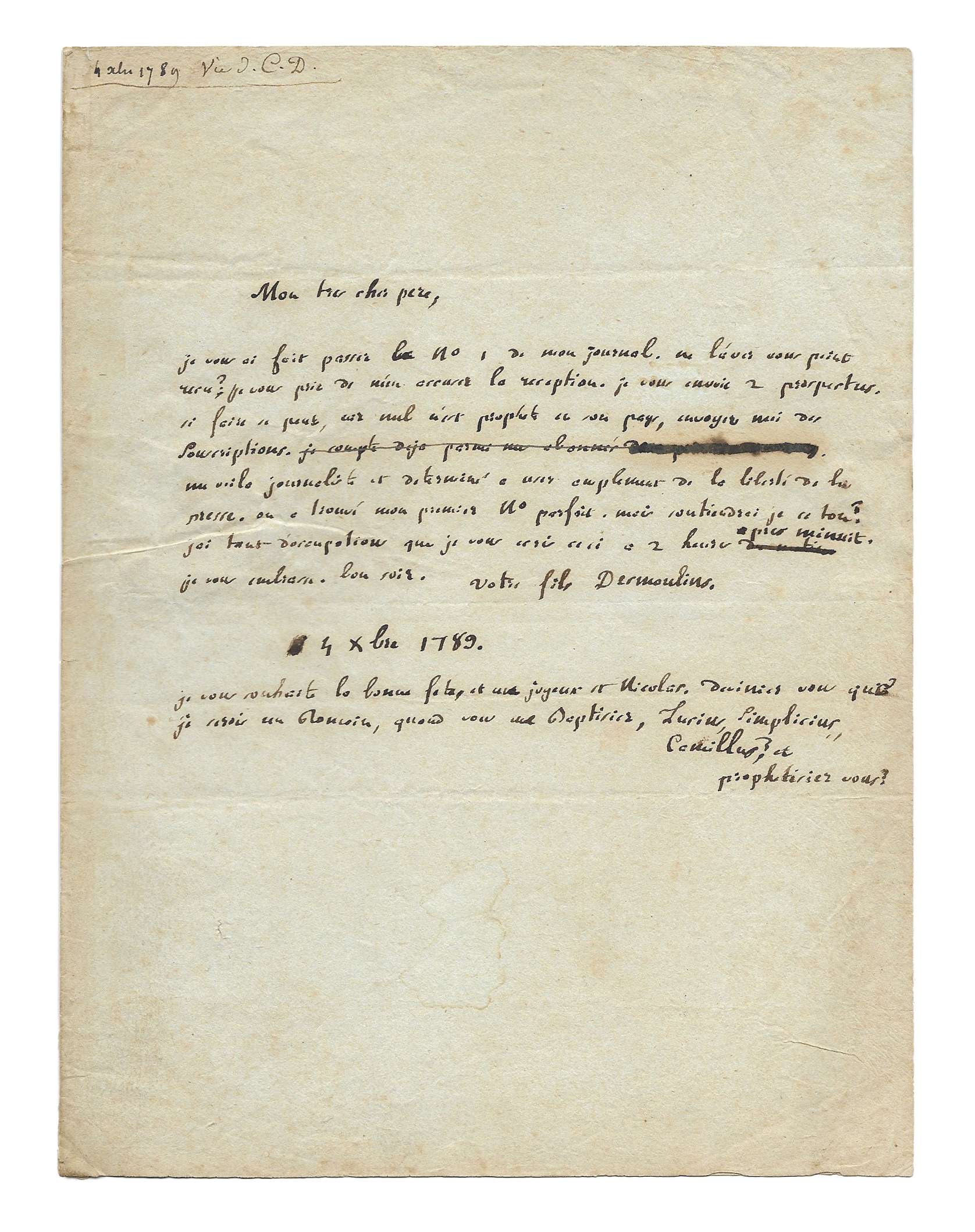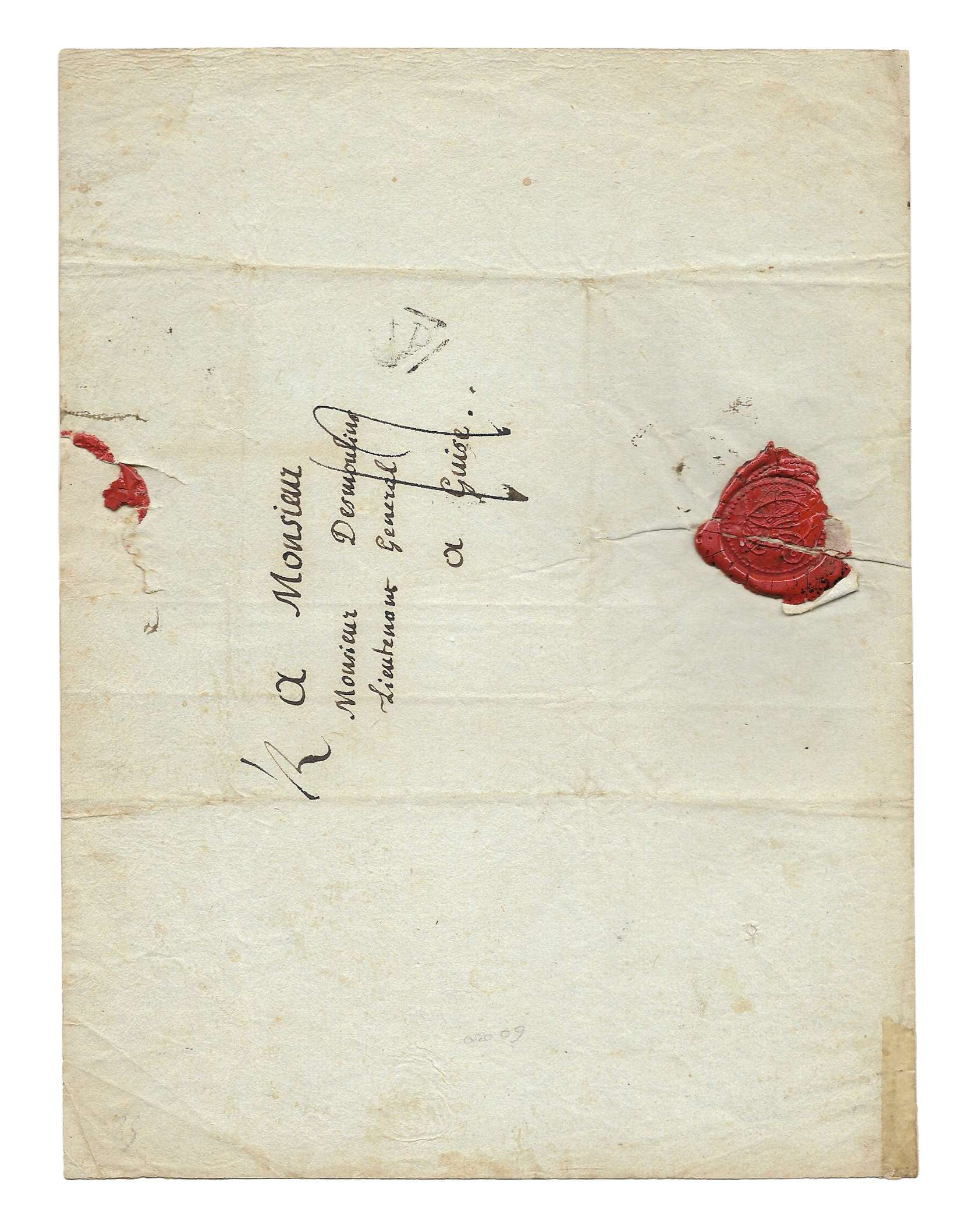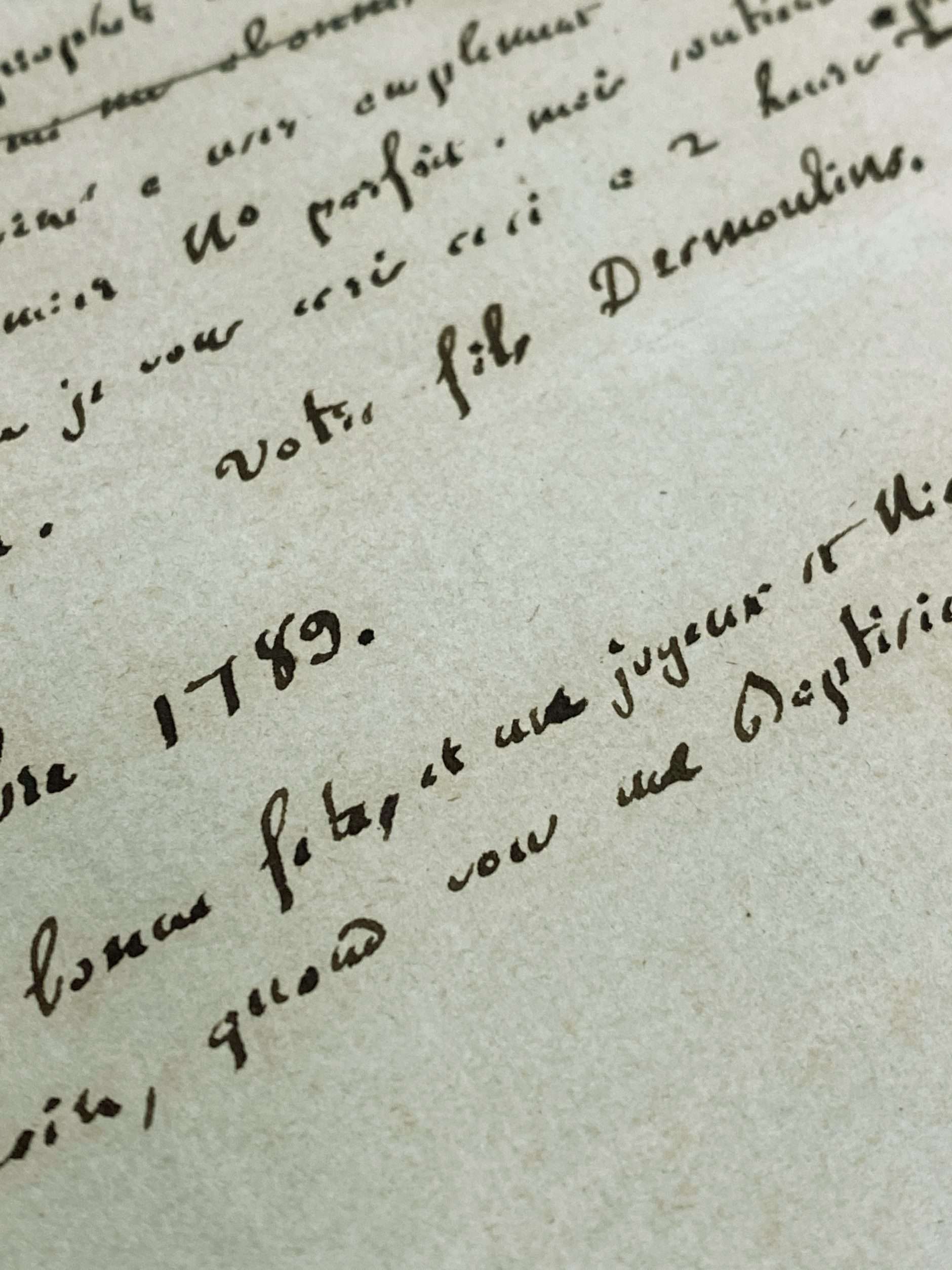DESMOULINS, Camille (1760-1794)
Autograph letter signed “Votre fils Desmoulins” to his father Jean-Benoist-Nicolas Desmoulins
[Paris] 4th December 1789, 1 page in-4, red wax seal to his initials
“Here I am, journalist and determined to make extensive use of freedom of the press”
Fact sheet
DESMOULINS, Camille (1760-1794)
Autograph letter signed “Votre fils Desmoulins” to his father Jean-Benoist-Nicolas Desmoulins
[Paris] 4th December 1789, 1 page in-4, red wax seal to his initials
Some spots, usual fold marks
Very precious and important letter from “The Man of July 14” taking advantage of Article 11 of the Déclaration des droits de l’homme et du citoyen to launch the first issue of his newspaper Les Révolutions de France et de Brabant
« Mon tres cher pere, Je vous ai fait passer le n° 1 de mon journal. Ne l’avez vous point reçu ? Je vous prie de m’en accuser la reception. Je vous envoie 2 prospectus.
Si faire se peut, car nul n’est prophete en son pays, envoyez moi des souscriptions. Je compte deja parmi mes abonnés deux princes du sang.
Me voilà journaliste et determiné a user amplement de la liberté de la presse. On a trouvé mon premier n° parfait. Mais soutiendrai je ce ton ? J’ai tant d’occupations que je vous écris ceci à deux heures du matin après minuit. Je vous embrasse. Bon soir. Votre fils Desmoulins.Je vous souhaite la bonne fête et un joyeux Saint-Nicolas. Deviniez-vous que je serais un Romain quand vous me baptisiez Lucius, Sulpicius, Camillus ? et prophétisiez-vous ? »
In the gardens of the Palais-Royal, on July 12, 1789, Camille Desmoulins, a young lawyer, climbed onto a table and shouts to the crowd :
“I come from Versailles, Necker is fired. Tonight all the Swiss and German battalions will leave the Champ-de-Mars to slit our throats. One resource we have left is to run to arms and attach green leaves to our hats as a uniform to recognize ourselves!”
The trees in the garden are stripped of their leaves, which, hanging from jackets or hats, form the first sign of the citizens. Two days later, the Bastille was taken. Desmoulins becomes “The Man of July 14”.
On 26 August, the Déclaration des droits de l’homme et du citoyen, a fundamental text of the French Revolution, stipulates in Article 11:
“The free communication of thoughts and opinions is one of the most precious human rights: every Citizen can therefore speak, write, print freely, except to respond to the abuse of that freedom in cases determined by the Law.”
Camille Desmoulins therefore devotes himself to writing in free France.
The very first issue of Révolutions de France et de Brabant was released from Garnéry’s presses on November 28, 1789. Desmoulins writes :
“The real palladium is the declaration of rights, it is freedom of the press”
As a feather soaked in acid, Camille Desmoulins will take the opportunity to attack the enemies of the patriots, often nominally. Like Danton, he is in for unfettered press freedom. When the Assembly discussed a framework for press freedom in January 1790 (the Sieyès project), he voted against it; this project, moreover, does would not pass.
This full use of press freedom will earn Camille Desmoulins several trials. The first was attacked, along with other journalists, by the executioner Sanson, who accused him of insinuating that he was a counter-revolutionary.
Desmoulins was the most brilliant representative of the freedom of the press during the Revolution.
Camille Desmoulins’ autograph letters are of the highest rarity in private hands





